Profile: Keith Barr, InterContinental Hotels Group
In his first interview since becoming chief commercial officer of InterContinental Hotels Group, Keith Barr talks about rebuilding the business around customers, the significance of data and analytics and being both a global and a local brand.
Sitting in the lounge of the £12,000-a-night Royal Suite at the InterContinental Park Lane hotel is the hotel group’s chief commercial officer Keith Barr. He could not have come further from his early adult years spent working as a chef at nights and weekends to pay for his degree in hotel administration from Cornell University.

“I’ve worked my way up to this role and truthfully, by my CV, you can look at it and say I’m not the logical choice to be the CCO for this company. I’m not a classically trained brand marketer, a distribution individual or brand builder,” says Barr. Starting out as a chef while still in high school and continuing throughout university gave Barr his work ethic and early understanding of business, spurring a career at IHG that has spanned 23 years in various roles, from sales and marketing to management (see CV, below)[1] .
“I’ve built the brand in China, I’ve worked in the US, emerging markets, Australia and the Pacific,” says Barr, “so that perspective makes me well suited to the role because I can have intelligent conversations strategically with almost any part of the business.”
Barr says he has a supportive board that helps him to be “better at the job” as well as a team of subject matter experts. For instance, IHG has just hired former British Airways head of global brand and marketing Jayne O’Brien as senior vice-president of global brands.
A focus on customers
Since becoming CCO in May 2013, Barr’s focus has been on building a ‘consumer-centric’ view of the world. With nine brands, including Holiday Inn and Crowne Plaza, 4,700 hotels globally and 77 million members signed up to loyalty scheme IHG Rewards, this is not an easy task.
The group’s RevPAR – the hotel industry’s performance metric, which is calculated by multiplying its average daily room rate by the occupancy rate – grew at 3.8 per cent in 2013, according to IHG’s preliminary results for the year, but this is below the global 2013 average growth rate of 4.4 per cent.
While IHG’s revenue for 2013 was up on the previous year by only 2 per cent at $21.6bn (£13bn), pre-tax profits increased by 10 per cent to $600m. Shareholders favour IHG’s ‘asset- light’ approach, which means it owns only seven properties outright, employing a strategy of franchising and hotel management.
A revitalised focus on customers has shown Barr that a consideration of consumers’ individual needs and experiences is vital in marketing.
I take the analytics and make it real by visiting hotels, sleeping in guest rooms and eating the breakfasts
“As an industry, we often talk about luxury and up-scale; mid-scale, with no food and beverage; and limited-service hotels. [But] customers don’t think that way. They wouldn’t say ‘I want to go to a mid-scale hotel with no food and beverage for my next stay’.”
Barr believes the industry has so far built brands by price point and has not fully understood consumers’ needs. He says the biggest change in the industry is a focus on ‘need segmentation’ and robust customer analytics to try and build more relevant propositions. To this end, IHG has developed two new brands in the past two years: Even and Hualuxe (see New Additions, below).[2]
Barr says a major challenge for the group is keeping up to date with modern trends because “millennials in particular are impacting all industries as they rise to their primary earning years”.
The behaviour of millennials is often linked to the pace of change in digital media and the two factors combined have the biggest overall impact on hoteliers. Barr is spending more time studying research on the consumer’s path to purchase and on how brands need not only to engage with customers today but also to be able to speak to them in three years’ time.
A particular focus lies in ensuring the organisation has the systems and people in place to reach these new consumers, with a concentration on digital strategy, data marketing and programmatic buying. “It’s making sure we have the skills and capability to do that today and for tomorrow,” says Barr.
The pace of change
Matt Luscombe, CCO of IHG Europe, agrees that the hotel industry is moving quickly and that millennials are driving customer trends. Specifically, he is concerned with the differences in the way that they regard travel and in how they research trips and make bookings.
“In some ways it’s helpful to look at generational shifts; in some ways it can blinker you,” he says. People often talk about millennials ‘changing the world’ through their technology usage but while the members of this group tend to be the first movers of technology, Generation X and the baby-boomers are also likely to use iPads and other mobile technology. “A lot of these trends hit all the generations; it’s simply the pace of adoption that varies,” he adds.
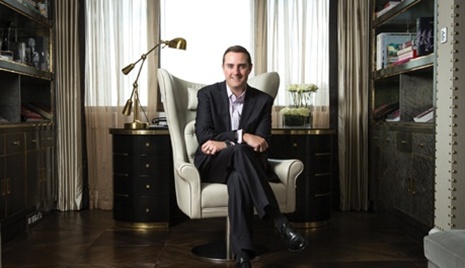
According to a report that Mintel published last year, millennial travellers will account for about 50 per cent of spending on business flights by 2020 and will become the leading cohort for another 10 to 15 years. This suggests that hotels seeking to cater for them should take specific steps such as creating more open, communal spaces equipped with quality Wi-Fi and a variety of seating options.
IHG launched its ‘open lobby’ initiative in November 2012 at Holiday Inn London – Brentford Lock, rolling it out on a trial basis to four more hotels. Communal areas have been created in the hotel lobby with traditional reception areas and restaurants transformed into different seating areas for eating, socialising and working. At some trial hotels, the initiative has doubled guest satisfaction (see Open Lobby Concept below)[3] and it is now in the pipeline for 17 more locations.
Global brands with local relevance
IHG’s latest trend report reveals another shift in the hotel industry: the importance placed by travellers on global brands with local relevance.
IHG’s franchise model makes this a challenge in trying to persuade individual hotel owners to provide a consistent offering. Barr explains that the group employs a framework in which the global strategy features regional forms of execution, but says IHG has a “real discipline process to get there”.
For Hotel Indigo, IHG’s boutique brand across the US, Europe and China, the aim is for each hotel to reflect the local neighbourhood, from the building’s design and artwork to locally inspired menus. IHG has eight Hotel Indigo properties in the pipeline for Asia, Middle East and Africa.
At the end of last year, 10 Hotel Indigo properties in the UK and Germany teamed up with footwear brand Superga to encourage guests to go out and explore the local neighbourhood. Free Superga shoes featured an icon on the insole representing the individual hotel and local area.
Meanwhile, the breakfast bars at Holiday Inn Express hotels are consistent with each country’s customs. Barr says: “If you tried to do the American or UK breakfast experience in China, you would be an abysmal failure but you can deliver the same proposition. In the US it’s a cinnamon roll, coffee and pancakes; in the UK it’s a bacon bap, coffee and fruit; and in China it is soya milk, congee and noodles. “We are still delivering the same proposition but it’s locally relevant.”
As an industry we talk about luxury, up-scale and mid- scale, but customers wouldn’t say ‘I want togotoamid- scale hotel with no food and beverage
By getting the global/local strategy right from the outset, the business is able to grow. In Europe, IHG has prioritised three regions for growth: the UK and Ireland, Germany and Russia, and the Commonwealth of Independent States (CIS). In Russia, the group last year signed up 10 hotels and this year it plans to introduce the Holiday Inn Express brand, in Voronezh.
Luscombe says: “Getting our commercial proposition right for different markets requires a lot of focus.”
At the same time, however, all hotels must reflect the global brand regardless of location. “We have to constantly be converging towards consistency because that’s what sets the expectation in customers’ minds,” says Luscombe.
Franchise model
Achieving consistency across 4,700 properties worldwide requires IHG to be tough with its proposition and ensure that every hotel operator follows its strategy. Over-performance is deemed “just as bad” as under-performance, says Barr.
He travels for about 125 days in the year and likes to spend time at each of the group’s hotel brands, both for business and for leisure. When staying at a Holiday Inn, for example, he tries to think like a customer, “taking the analytics on customer experience and making it real by sleeping in a guest room, experiencing the breakfast and seeing why customers would say certain things about the brand”.
This gives Barr a close-up view of specifics. He recounts a visit to a particular IHG hotel where he had to ask the owner not to give customers wine and a fruit basket on arrival because although guests appreciated the gesture, it was inconsistent with the brand’s strategy and franchise agreement.
Barr says: “I don’t want guests getting a bottle of wine and a fruit basket when they turn up; that’s not what we do. [The staff] thought they were doing the right thing by delighting that customer on that stay, but what they were doing was undermining the brand proposition.”
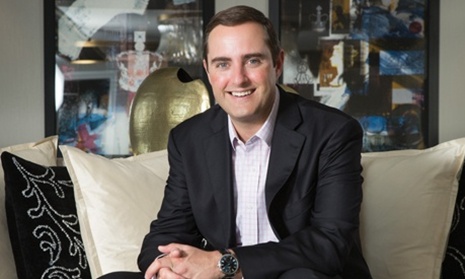
Barr illustrates his point by citing Coke, saying its success is due in part to customers knowing what to expect from the brand. “If it tasted like a Sprite every third time they drank it, a customer would not put a lot of value on Coke.”
While travelling, Barr also spends time in competitors’ hotels to compare their offerings with IHG’s, learning by observing the customers in the lobby while he checks in.
Insight from loyalty
Customer insight and analytics were critical when the group launched the Even and Hualuxe brands, which are tailored to specific consumer needs in sectors that IHG identified as lacking. The Even hotels cater for healthy-minded customers wanting to eat well and keep active while travelling. Hualuxe, meanwhile, is specifically a Chinese brand with hotels featuring tearooms instead of traditional Western-style bars.
IHG used insight from the 77 million members of its IHG Rewards loyalty scheme – the largest hotel programme in the world, it claims – to inform the creation of the two new brands, as well as a broad spectrum of travellers.
IHG Rewards allows customers to be multi- brand users while accruing points that can be redeemed across the group. Such schemes have been criticised recently by aggregator Hotels.com, which claims they are overly complicated and hard to understand.
Barr says: “If I was in their position, I would probably say the same thing. [These schemes] can be perceived as complicated but we are always trying to make them simpler.
“I look at the travel blogs; we do focus-group interviews. Our highest-value customers get it, know how to use it and, in fact, figure out things about our programmes that we haven’t always figured out, to help us get better.”
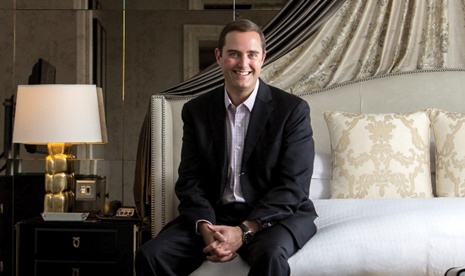
IHG Rewards was relaunched last year to include free Wi-Fi worldwide for members, which IHG claims is an industry first. The group says this drove a 10 percentage point increase in awareness of IHG as a brand family.
The scheme is also used to encourage IHG consumers to make direct hotel bookings instead of using aggregators such as Hotels.com and Laterooms.com.
The focus on customer analytics has made the relaunched IHG Rewards more targeted, Barr believes. In the past, IHG sent all members details of the same hotel deal, but a recent promotion involved 310,000 unique offers being sent out.
Real-time analytics
Using data acquired via the loyalty scheme, IHG can analyse customer stays over the past month, six months and 12 months, focusing on which customer behaviour elicits more value for the brand and how it can map offers and incentives throughout the customer journey.
Barr says: “We are having conversations about how you do that in real time, based on consumer buyer behaviour on the website now, [and considering] how we shift them to the highest- value activity for us and the best experience for them and converge the two.”
To date, the group has conducted research aimed solely at achieving a better understanding of the different customer types for each brand, without using the data from the loyalty programme. But IHG believes it can achieve more by intersecting the loyalty data with its segmentation data to reveal the top loyalty members and customers for each brand, leading eventually to better propositions for customers based on their previous stays.
IHG is all too aware that it cannot afford to rest on its laurels.
“We have had a phenomenal run: great revenue growth, profit growth, phenomenal returns to shareholders,” says Barr. “I would say we are almost a darling in the hotel sector in terms of our performance.
“However, you have to sustain that advantage over time. What got you there may not [still] get you there in 10 years’ time.”
New Additions
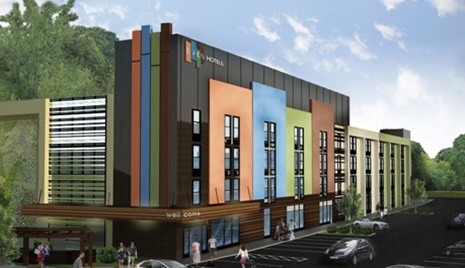
In 2012, IHG launched two new brands: Hualuxe Hotels and Resorts and Even Hotels. Hualuxe was developed in China to meet the needs of guests currently not served by international brands; it has 21 properties signed up, with the first hotel due to open at the end of this year. Hotel developers in China took up the proposition without seeing any drawings of the hotels on the strength of the fact that IHG had identified a need for a Chinese-focused hotel brand.
In February 2012, IHG launched Even, its first mainstream US brand, with a focus on wellness to meet the large and growing customer demand for healthier travel. IHG found that 60 million customers in the US had a need for wellness that was not being met. It has five hotels signed up to date, with first openings due this year in Maryland, Connecticut and New York.
Holiday Inn: the open lobby concept
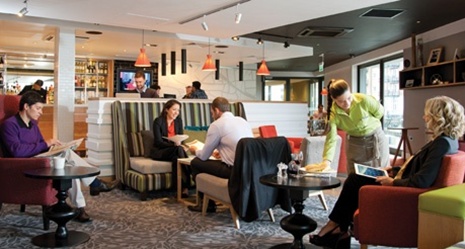
Holiday Inn’s ‘open lobby’ concept launched in November 2012 and is live in four UK hotels, with 17 in the pipeline in Europe. It offers communal areas where guests can socialise, work, eat and drink, instead of the traditional lobby experience of separate check-in and restaurant.
IHG says guest satisfaction levels nearly doubled at Holiday Inn London – Camden Lock after the ‘open lobby’ was introduced into the hotel. At Brentford Lock, 92 per cent of guests spent an hour or more in the lobby compared with 43 per cent prior to the introduction of the concept. Meanwhile, financial performance at Brentford Lock showed a 42.1 per cent increase in food and beverage gross profit. The brand is currently trying to develop its position as a family proposition.
Holiday Inn Express aired its first TV advert as a standalone brand in September 2013 and is back on TV screens now.
The hotel brand has free breakfast and Wi-Fi but few other amenities, for example, there is no swimming pool or gym.
A new marketing campaign highlights its strapline, ‘Simple. Smart. Spot On’, which includes a jargon-busting guide and a YouTube video of interviewees on the perils of complex phrases, buzz words and jargon.
Previously, the brand hired ‘life hacker’ Dave Hax to develop a series of videos solving common travel problems.
The brand also ran an experiential activity that brought the life-hacker videos to the streets through the medium of dance.
CV: Keith Barr
2013-present
Chief commercial officer, IHG
2009-13
Chief executive officer, Greater China, IHG
2006-08
Chief operating officer, Australia, New Zealand and South Pacific, IHG
2005
Vice-president, operations, Holiday Inn, Staybridge Suites and Candlewood Suites, North America, IHG
2003-04
Vice-president, operations, Holiday Inn Hotels, North America, IHG
2001-02
Vice-president, operations, Holiday Inn Hotels, (Western Region) North America, Bass Hotels & Resorts
2000-01
Vice-president, sales and revenue management, Bass Hotels & Resorts
References
- ^ (see CV, below) (www.marketingweek.co.uk)
- ^ (see New Additions, below). (www.marketingweek.co.uk)
- ^ (see Open Lobby Concept below) (www.marketingweek.co.uk)









